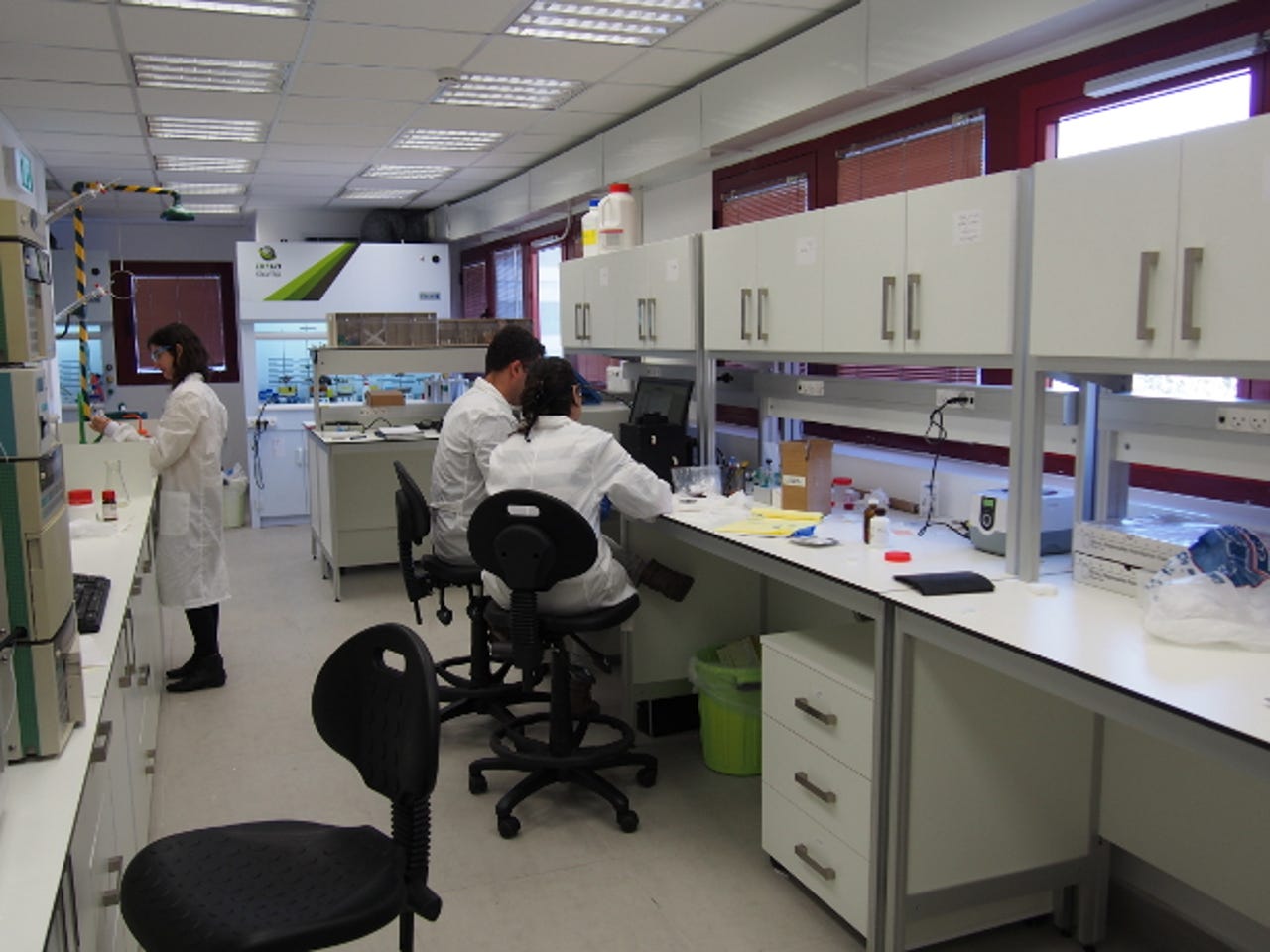StoreDot: Inside the nanotech that can charge your phone in 30 seconds


In offices in a dusty street near the Diamond Exchange building in Ramat Gan, something interesting is afoot: a company called StoreDot is working on battery technology that many mobile users will have been longing for for some time.
The basis of StoreDot's work was discovered during a University of Tel Aviv research project into Alzheimer's disease. The researchers found that a certain peptide molecule that 'shortens' neurons in the brain causing Alzheimer's was also seeming to show high capacitance, thanks to an ability called 'charge trapping' — where electrons are effectively held in place.
According to Professor Gil Rosenman, who worked on the project and is now StoreDot's chief scientist, two of these molecules can be used to create a viable crystal only two nanometers long. These crystals form the NanoDots at the heart of Storedot's technology.
Artificially synthesised from the same building blocks — elements such as oxygen and hydrogen — as natural peptides, these NanoDots could prove disruptive to multi-billion-dollar industries such as batteries, displays, image sensors, and non-volatile memory.
Doron Myersdorf, former head of SanDisk's SSD division and now StoreDot's CEO, says that the company has decided to focus on NanoDots' uses in smartphone related technologies, including faster memory; more sensitive camera sensors ultrafast-charging batteries; and flexible, energy-efficient displays.
Founded in 2012, StoreDot is now chiefly concentrating on the last two areas. Demoing this week at Microsoft's ThinkNext event in Tel Aviv, StoreDot showed a prototype of a battery using NanoDots — powering a standard Samsung Galaxy S3 smartphone — that charged from flat to full in under a minute.
How does it work? The NanoDots cover the tiny 'cavities' that cover an electrode found in a standard battery, extending its reactive surface, and allowing its capacity to be increased tenfold. Through the addition of the NanoDots, the electrode becomes "multi-function" — at one end, the electrode stores electrical energy creating a capacitor, and at the other, lets it flow into the battery's lithium.
In layman's terms, StoreDot has created a 'buffer' that stores electrical current coming from the wall socket over a period of around thirty seconds, then letting it flow slowly into the lithium. Myersdorf says that eventually, the company plans to get rid of the lithium in the battery altogether.
Changing the chemical reactions occurring inside the battery should also improve battery life in long run — allowing thousands of charge cycles instead of hundreds today — while still keeping the same weight and form factor.
The NanoDots have other intriguing qualities too. When embedded into polymer and everyday screens, they can replace the toxic materials like cadmium used in modern displays. They can also be manufactured in different colours, using a special version of basic colours to create a full, rich colour matrix.
StoreDot's team, at the behest of manufacturers, is using blue backlighting instead of white, and the NanoDots can be used in both LCD an bio-LED screens — or, in Myersdorf's words: "We can do displays for both Samsung and Apple", a reference to the different display technologies each company is using today (Apple with LCD, Samsung with organic LED).
StoreDot already has prototype displays in its lab, and showed me this week how it's lighting a standard iPhone display. There's not a full colour range yet — only 70 percent — but the company is working towards more than a full NTSC colour gamut. StoreDot future displays are equally free of toxic materials and, as a bonus, they're flexible too.
The NanoDots also have applications in the pharmaceutical industry as drug delivery agent and could one day replace metals such a gold or silver currently needed to penetrate cell membranes and deliver the active ingredient.
With several patents filed and several more pending, as well as a big smartphone company onboard as an investor, Myersdorf intends to have his company's products ready for marketing in 2015 and on sale in 2016. But don't rejoice too much just yet: StoreDot's new batteries will cost twice as much as the regular ones.